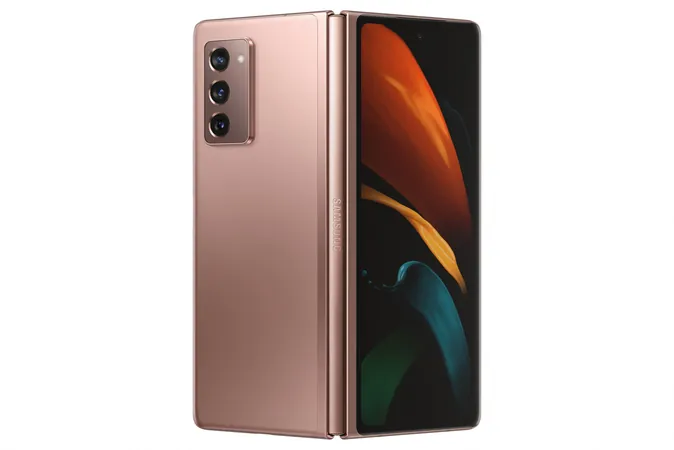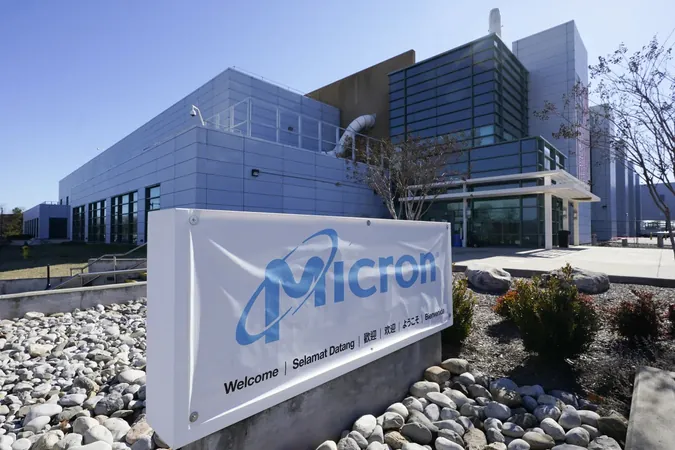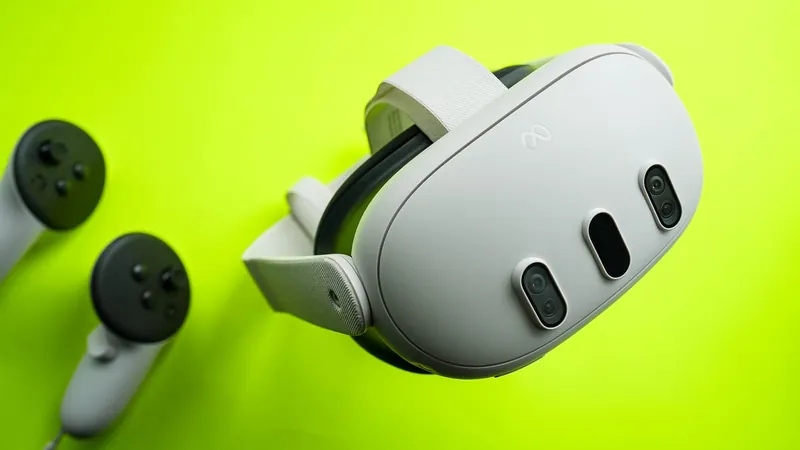
Samsung Pulls the Plug on Galaxy Z Fold 2 Updates: What This Means for Buyers
2024-10-08
Author: Chun
In a shocking move, Samsung has officially ceased software and security updates for its Galaxy Z Fold 2, a foldable smartphone that debuted at a whopping $2,000 in September 2020. This announcement has left many early adopters wondering about the long-term viability and support for their high-end devices.
Device Overview
Launched with great expectations, the Galaxy Z Fold 2 was powered by a Qualcomm Snapdragon 865+, featured 12GB of RAM, and boasted 256GB of UFS 3.1 storage. What truly set it apart was its stunning 7.6-inch OLED main display with a resolution of 2208x1768 pixels and an impressive refresh rate of up to 120 Hz. The device also included a 6.2-inch external screen (2260x816 pixels), significantly larger than its predecessor, and was one of the first to incorporate under-screen camera technology.
Following the durability issues that plagued the original Fold, the Z Fold 2 was Samsung's second attempt at mastering foldable technology. This effort led to the release of the more affordable Galaxy Z Fold 3 in 2021, priced at $1,800, and the company has since introduced up to six iterations of this innovative device, including a new model that hit the market in July 2023 for $1,900.
Discontinuation of Updates
The recent decision to discontinue updates on the Z Fold 2 aligns with Samsung's ongoing strategy, as noted by Sam Mobile, who observed that the device has been removed from the company's security update list. The last significant Android OS update for the Fold 2 was issued last year, with its final One UI update arriving at the end of 2023. It’s worth noting that the Galaxy Tab A7, another device launched in 2020 for $230, also lost its support, as reported by 9to5Google.
Samsung's Commitments
In February 2022, Samsung committed to providing up to four generations of Android OS and One UI upgrades for select devices, along with security updates spanning five years. This commitment was recently expanded to seven years, following in Google’s footsteps. However, the Galaxy Z Fold 2 did not make the cut for these extended promises.
User Reactions and Comparisons with Apple
While users had speculated the device would cease receiving updates in 2024—four years post-launch—many are frustrated to see their once-premium smartphones now vulnerable to security risks without timely patches. In comparison, Apple is stepping up its game, recently promising a minimum of five years of security updates starting with its 2023 iPhone 15 series. Notably, current iOS 18 supports models dating back to 2020 and even older devices, such as the iPhone XR from 2018.
Industry Implications
This discrepancy highlights a growing concern within the tech community regarding the lifespan of high-cost devices like the Z Fold 2. Activists are now urging the Federal Trade Commission (FTC) to mandate that all smart devices display clear information regarding how long they will receive updates, pushing for greater transparency from manufacturers.
Challenges Ahead
The challenge lies in the fact that Samsung smartphones are not equipped with proprietary chips like Apple's, necessitating third-party partnerships for upgrades—an issue exemplified by Qualcomm's previous reluctance to extend chip life cycles. Although Samsung’s pledge for a longer update window is a step in the right direction for many, it sadly does not extend to early adopters of the Z Fold 2.
Conclusion
In conclusion, as technology advances, the conversation about device longevity and support is becoming more critical than ever. Users who invest in high-end smartphones deserve to know how long they can expect updates and security patches, and with Samsung's recent update withdrawal, the industry needs to address this pressing issue head-on.



 Brasil (PT)
Brasil (PT)
 Canada (EN)
Canada (EN)
 Chile (ES)
Chile (ES)
 España (ES)
España (ES)
 France (FR)
France (FR)
 Hong Kong (EN)
Hong Kong (EN)
 Italia (IT)
Italia (IT)
 日本 (JA)
日本 (JA)
 Magyarország (HU)
Magyarország (HU)
 Norge (NO)
Norge (NO)
 Polska (PL)
Polska (PL)
 Schweiz (DE)
Schweiz (DE)
 Singapore (EN)
Singapore (EN)
 Sverige (SV)
Sverige (SV)
 Suomi (FI)
Suomi (FI)
 Türkiye (TR)
Türkiye (TR)